《听李少白大师讲摄影》
- 2020-12-17 14:38:06
- 点赞量:6031
- 点击量:106840
- 作者:郝连成 Hao Liancheng

“好片子是拍出来的吗?”
"Is a good film made?"
“我认为,好片子是走出来的”
"I think good movies come out."
在佳木斯摄影家协会主办的摄影讲座上,李少白语出惊人,让所有参加听讲人马上仄起耳朵想听听这位中国摄影界的大师到底有什么高论。
At a photography lecture hosted by the Jiamusi Photographers Association, Li Shaobai made a surprising remark and asked all the participants to close their ears immediately to hear what the master of Chinese photography had to say.
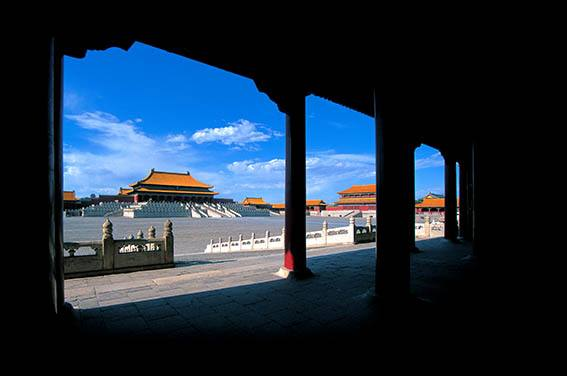
2016年5月15日,佳木斯摄影家协会借佳能摄影大篷车全国巡讲”之机,请到了国内著名的摄影大师李少白。
On May 15, 2016, Jiamusi Photographers Association invited Li Shaobai, a famous domestic photographer, by taking the opportunity of "Canon photography Caravan" for national tour.
通过看李大师的作品,听他对每幅作品拍摄过程介绍,听众们理解他所说好照片是走出来的含义。
By looking at Master Li's works and listening to his introduction to the shooting process of each work, the audience understood what he meant by good photos.
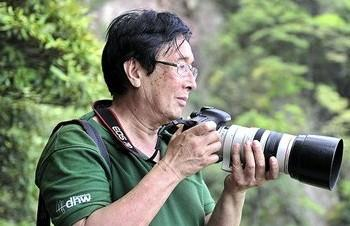
本人理解,李少白的所谓“走”,分大走、中走和小走。大走是世界各地,国内名山大川;中走是到各个景区,别人没到过的地方,看不到的地方,想不到的地方。小走是在拍摄现场通过不停的走动最后发现与众不同的角度,拍出不同凡响的作品。
I understand that Li Shaobai's so-called "walk" can be divided into big walk, medium walk and small walk. Big walk is famous mountains and rivers all over the world; middle walk is to various scenic spots, places that others have never been to, places you can't see and places you can't imagine. Small walk is in the shooting scene, through constant walking, finally found a different angle, shot extraordinary works.
有一年,扬州市政府在世界范围内邀请了7位国际有名的摄影家到扬州拍片,李少白是唯一的中国摄影师,在拍摄一位著名画家时李少白就是通过不断地来回走动发现了与众不同的地方,最后从二楼往下倒拍了-张作品,成了此次7人摄影师中的唯一入选作品。
The only one of the famous photographers who went down from Shao Bai in China to take pictures in the world was the only one who had been invited by the government of Shaozhou to take pictures in the world.

李少白在拍摄作品时一般用如下方法:首先是对拍摄对像进行观察,通过观察,在平凡中发现情趣,在对比中发现统-,在纷杂中发现和谐,在简洁中表现出深刻。在新疆塔吉克族的一家餐馆为拍一个光影效果的塔吉克少妇,李少白在别人都坐等上菜时,拎着相机不停地走动,从各种角度寻找可拍的画面,终于在屋角和葡萄架两个三角阴影的结合处捕捉到了身穿红色衣裙的少妇。整个画面构图别致,线条疏朗,色彩明丽。“我的这张片子就是走出来的。 我走到了通往灶间的天井才偶然的看到了那屋角和葡萄架的阴影和架下通过的少妇,如果我也是在前厅和大家一道喝茶等着上菜,就发现不了这样的场景。”李少白讲述他这张作品的拍摄经验。
Li Shaobai usually uses the following methods when shooting his works: first, he observes the object, finds interest in the ordinary, finds unity in the contrast, finds harmony in the miscellaneous, and shows profundity in conciseness. In a Tajik restaurant in Xinjiang, in order to photograph a Tajik young woman with light and shadow effect, Li Shaobai walked around with his camera while others were waiting to serve, looking for pictures from various angles, and finally captured the young woman in red dress at the combination of the corner and the grape trellis. The composition of the whole picture is unique, with sparse lines and bright colors. "I came out of this film. When I got to the patio leading to the kitchen, I happened to see the shadow of the corner and the grape trellis and the young women passing under the trellis. If I were drinking tea with everyone in the front hall and waiting to serve, I would not have found such a scene. " Li Shaobai talks about his experience in shooting this work.
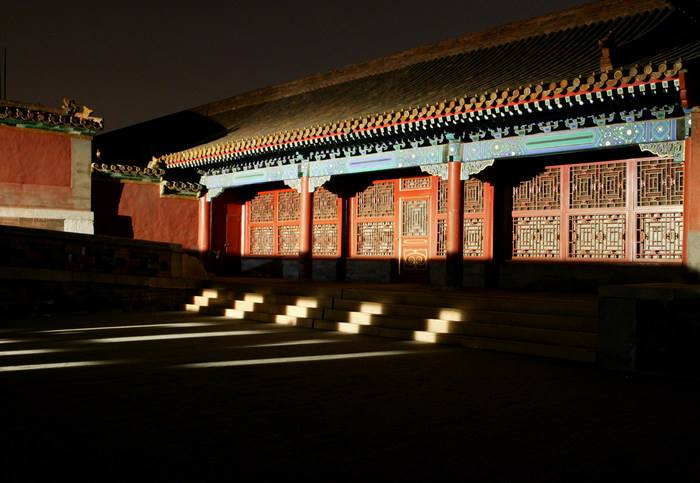
李少白的摄影出神入化,与他的渊博知识和丰富的艺术修养密不可分。
Li Shaobai's superb photography is closely related to his profound knowledge and rich artistic accomplishment.
李少白,1942年出生在重庆市,曾就读北京体育学院足球专业,毕业于北京邮电学院无线电技术专业。先后任《大众摄影》、《中国摄影》、 《摄影与摄像》等杂志的编委,并任中央民族大学现代图像艺术学院客座教授。
Li Shaobai, born in Chongqing in 1942, studied football major in Beijing Institute of physical education and graduated from radio technology major of Beijing University of Posts and telecommunications. He has successively served as the editorial board member of popular photography, Chinese photography, photography and photography, and a visiting professor in the school of modern image art of Central University for nationalities.
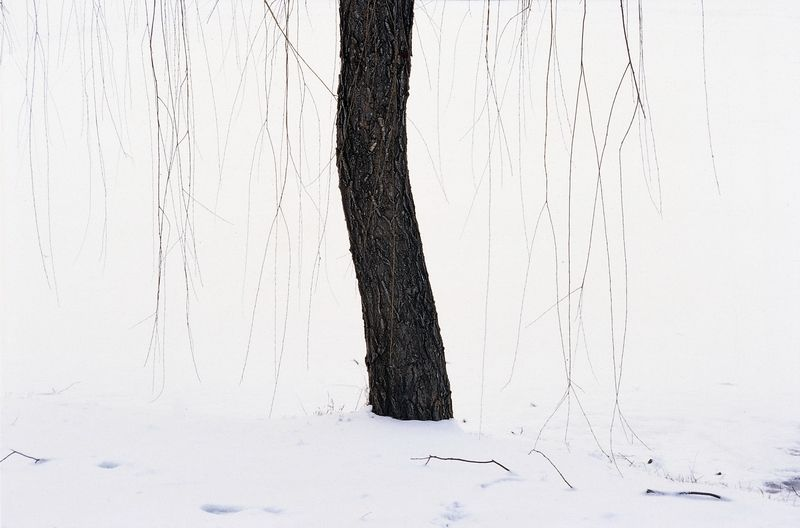
李少白先生是一位坚持从人本主义的审美展现、诠释中国传统标志性建筑(群)的著名摄影家,出版了《李少白作品摄影选》、《神秘的紫禁城》、 《伟大的长城》、 《走进故宫》 、《中国长城之最司马台长城》、《长城野韵》 、《看不见的故宫》、 《看不见的长城》 等多本画册,视角独特,影响深远。长城和故宫摄影作品曾在北京、上海、 台湾等地展出,并在法国、德国、日本、爱沙尼亚、瑞士、美国等地展出。
Mr. Li Shaobai is a famous photographer who adheres to humanistic aesthetic display and interpretation of Chinese traditional landmark buildings (groups). He has published selected works of Li Shaobai, mysterious Forbidden City, great wall, walking into the Forbidden City, Simatai Great Wall, wild rhyme of the Great Wall, invisible Forbidden City, etc The Invisible Great Wall and many other albums have unique perspectives and far-reaching influence. Photographs of the great wall and the Forbidden City have been exhibited in Beijing, Shanghai, Taiwan and other places, as well as in France, Germany, Japan, Estonia, Switzerland and the United States.
中国著名摄影大师狄源仓曾这样介绍李少白:“李少白有一肚子诗,李白的杜甫的,李后主的,李清照的,陶渊明的甚至马雅可夫斯基的,这些诗句参和到一起,在李少白的心窖里酿成了一种独特的“诗酒”。这样一来,李少白的照片张张都带着一种诗酒的芳香, 带着一种别的高手怎么使劲也拍不出来的特别香醇的味道。”
The famous Chinese photographer di Yuancang once introduced Li Shaobai as follows: "Li Shaobai has a lot of poems, such as Li Bai's, Du Fu's, Li Houzhu's, Li Qingzhao's, Tao Yuanming's and even Mayakovsky's poems. These poems are combined to form a unique" poetry wine "in Li Shaobai's heart. In this way, all the photos of Li Shaobai are full of the fragrance of poetry wine, with a kind of special mellow taste that other experts can't even take out. "

从李少白的摄影作品集《画中有话》中就可感受到里边摄影精美和配文的诗意。
From Li Shaobai's collection of photographic works "words in the picture", we can feel the exquisite photography and poetic flavor of the essays.
李少白的摄影艺术理念还和他不断汲取世界艺术大师的经典理论有关。在李少白的作品集中会经常引用世界各国画家,摄影家,艺术家的名人名句来佐证他的观点和理念:
Li Shaobai's concept of photography art is also related to his continuous absorption of the classic theories of world art masters. In his works, Li Shaobai often quotes famous words from painters, photographers and artists from all over the world to prove his views and ideas
要想拍出你所感知到的景象,主要的挑战就是学会控制你的相机,(以及其他工 具和技术)。这是李少白告诫在座各位摄影人的一句加拿大摄影家弗里美帕特森的名言。现在很多摄影人都在追求摄影器材的更新,但真正把相机的各种功能全部弄明白并且能熟练应用的不多,这就是不能控制相机也是不能拍出满意片子的主要原因之一。
To capture what you perceive, the main challenge is to learn to control your camera (and other tools and techniques). This is a famous saying of Canadian photographer frime Patterson, which Li Shaobai warned all photographers. At present, many photographers are pursuing the updating of photographic equipment, but few of them really understand all the functions of the camera and can skillfully use them. This is one of the main reasons why they can't control the camera and can't make satisfactory films.
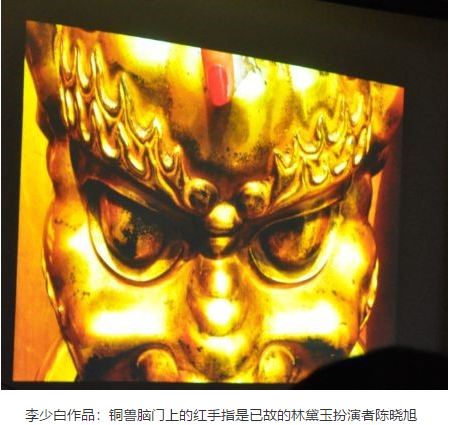
“线条的魅力,显然在于它各部之间的关系。”----- (美国乔治●塔桑耶那)
"The charm of a line is obviously in the relationship between its parts." -----(George tasayna, USA)
“影像需要的一种内在的平衡来给人一种和谐感,不应该只是为了引起观众的注意而将不同的色调和形状的景物全部拍摄下来,取景时该取的就取,该舍的就舍,务必记住,取舍两者同样重要。”----英国戴维·沃德。
"The image needs an internal balance to give people a sense of harmony. We should not shoot all the scenes with different colors and shapes just to attract the attention of the audience. We should take what we should take and what we should give up. We must remember that both are equally important." ----David ward, England.
像这样世界级大师的艺术观点李少白能信口道来。并且用自己的话来诠释。像说到取舍都重要,李少白就用了一句绘画术语:要有留白,给人以想象。
Like this, Li Shaobai, a world-class master, can speak his mind. And use their own words to interpret. For example, when it comes to trade-offs, Li Shaobai used a painting term: to leave blank, to give people imagination.
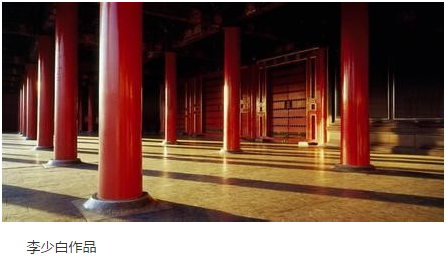
李少白说图片的表现力,很大程度取决于摄影者的抽象能力,也就是从整体中抽取富有特征的形式要素,(形状、 线条、质感、色彩、明暗等)的能力。为什么要抽象?因为抽象可使视觉形象简洁化、秩序化、形式化、有助于观者更好地认识视觉最本质的东西。
Li Shaobai said that the expressiveness of a picture largely depends on the photographer's abstract ability, that is, the ability to extract characteristic form elements (shape, line, texture, color, light and shade) from the whole. Why abstract? Because abstraction can make the visual image concise, orderly, formalized, and help the viewer to better understand the most essential things of vision.
总结一下听李少白的讲座收获:那就是多走、多拍、多观察,多思考。从无中生有,从有中找出关系,从关系中发现和谐,通过简洁对比表现出被拍对像的诗意和醇美。
To sum up, Li Shaobai's lecture gains: more walking, more shooting, more observation and more thinking. From nothing, from the relationship to find the relationship, from the relationship to find harmony, through a simple contrast to show the image of the poetic and mellow beauty.
艺术家永远追求的就是与众不同。
What artists always pursue is to be different.




雁在蓝天